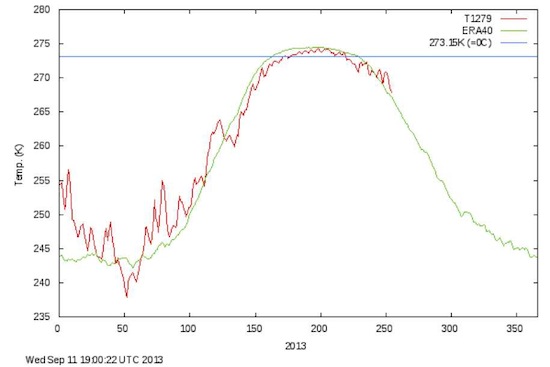No doubt about it. The Earth's climate is cooling!
One of the most prescient indicators clearly shows it, namely the
Danish Meteorological Institute's daily mean temperatures for the Arctic area north of the 80
th northern parallel. They have been measured for over 50 years which shows a long-term average of 90 days with the air temperature above freezing.
The Year 2013The year 2013 has seen a dramatic departure from that routine. In 2013, the summer (above freezing temperatures) lasted for only 45 days, one half of the average number of days. Not only did the frost-free days start much later than on average this year, they also ended much earlier, see the figure below. In fact, the frost-free period seen this year was significantly shorter than in other year since 1958, when the recordings began.

© Danish Meteorological InstituteFig. Observed temperatures in the Arctic (latitude above 80° N) by day of the year in 2013 (red line), the long-term average (green line) and the freezing temperature (blue line); temperatures in degree Kelvin (K).
The new data corroborate other findings of no global warming for the last 18 years. In fact, not a single of the 20-plus climate prediction models used by the Intergovernmental Panel on Climate Change (IPCC) even shows the recent temperature developments as within their model uncertainties. It begs the question: Is another ice age imminent?
Comment: For more on Henrik Svensmark's research see: The Cloud Mystery